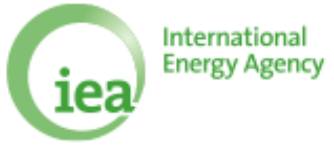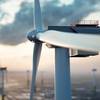New Report on Norwegian Energy Policy
Scandinavian country’s energy policies are a positive example for others to follow, according to new report
Norway is pursuing ambitious, forward-thinking energy policies, but could go further in its efforts to become a low-carbon economy, the International Energy Agency (IEA) has concluded in a review published today.
Energy Policies of IEA Countries - Norway 2011 Review says that it will be challenging for Norway to meet its 2020 target of reducing greenhouse gas emissions by 30% compared with 1990 levels, because both the country’s electricity supply and its energy use in buildings are already essentially carbon-free due to hydropower use.
The authors add, however, that because of the large revenue generated from oil and gas exports, Norway is particularly well-placed to invest in developing new solutions to achieve the desired low-carbon future. These solutions include new measures to promote greater energy efficiency and use of renewable energy.
“Norway’s climate and energy policies stand out as a positive example for other countries,” said Nobuo Tanaka, Executive Director of the IEA, at the launch of the review in Oslo, on 15 March. “But Norway must now invest in developing new measures in order to continue moving forward towards its ultimate goal of becoming carbon-neutral by 2050.”
Transparent and competent
The study notes that as the third-largest exporter of energy in the world after Russia and Saudi Arabia, Norway improves the energy security of consuming countries (or uninterrupted availability of energy at an affordable price).
The authors find that Norway has a consistent and predictable regulatory framework for exploration and production, and it manages both its oil and gas resources and revenue in a transparent and competent manner.
“The IEA acknowledges Norway’s contribution to global energy security and regards its oil and gas resource and revenue management as commendable. It is a model for other countries to follow,” Mr Tanaka said. “The next challenge for the government is to stimulate increases in oil and gas production with safe and environmentally sustainable operations.”
Efficient electricity sector
The IEA review also commends the continued reliability and efficient performance of Norway’s electricity sector.
It adds that Norway, with its large hydropower capacity, can play a significant role as European electricity markets integrate and variable renewable energy generation increases. For this, the report stresses that the planned interconnections should be implemented swiftly.
“The IEA encourages Norway to use its hydropower capacity, the largest in Europe after Russia, to balance variations in demand and supply in the expanding regional market,” the authors write. “This would increase flexibility and efficiency in the integrating regional electricity market and, therefore, enhance European electricity security.”
The report adds that Norway can also to help meet the electricity demand in the region by temporarily relaxing a ban on the construction of gas-fired power plants which lack Carbon Capture and Storage (CCS). This would, the report says, help lower CO2 emissions in the region as well as help ensure security of supply.
Tackling climate change
With its strong commitment to global climate change mitigation, Norway has set a fine example to other countries, the report says.
As well as noting that public funding for research, development and deployment of clean energy has more than tripled from 2007 to 2009, the study flags Norway’s global leadership as one of the front-runners of CCS.
“[Norway] hosts two of the world’s five large-scale CCS projects, and the government is strongly committed to significant support of further CCS technology development, demonstration and widespread deployment,” the authors write.
However, the review flags oil and gas production, manufacturing and transport as areas with most potential for further cuts in energy-related greenhouse-gas emissions. It adds that further efforts to promote energy efficiency and renewable energy should also be a significant area of focus.
The IEA report recommends that the Norwegian government develop a roadmap outlining the path to a carbon-neutral future. Once this has been adopted, the authors write, the government should begin to implement it without delay.
Source: IEA














